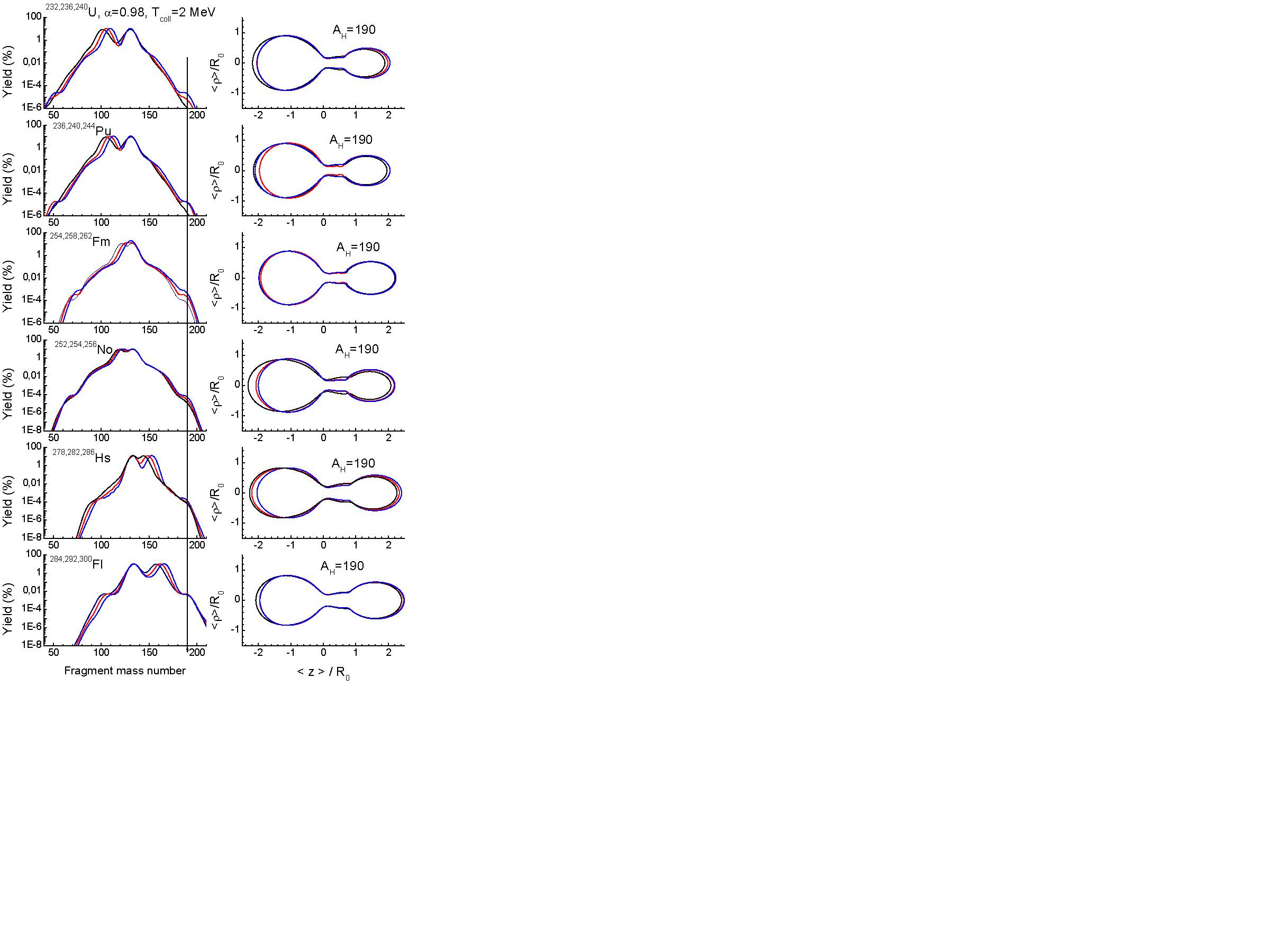Доповідач
Опис
Dumbbell shapes in the super-asymmetric fission of heavy nuclei
F. A. Ivanyuk$^{1}$, N. Carjan$^{2}$
$^{1}$Institute for Nuclear Research, National Academy of Sciences of Ukraine, Kyiv, Ukraine
$^{2}$National Institute for Physics and Nuclear Engineering, POB MG6, Magurele-Bucharest,Romania
An improved scission-point model is used to calculate the fission fragment mass distributions (FFMDs) over a large domain of fragment masses for several fissioning nuclei, see [1]. The isotopes of uranium, plutonium, fermi-um, nobelium, hassium and flerovium are studied.
In addition to the standard peak at $A_F=132$, a pronounced shoulder is found at large mass asymmetries ($A_F=190$) for all these nuclei, see Fig.1. The probability of this SAF mode relative to the standard mode is increasing with the charge and the mass of the system from $10^{-6}$ in U to $10^{-2}$ in Fl.
The extra stability of this rare mode is due to a very large shell effect when the heavy fragment has the mass 190 amu. The corresponding scission shape turns out to be an asymmetric dumbbell with a spherical heavy weight and a deformed light weight. This association of a pecu-liar shape with a minimum of potential energy at scission is valid also at the most probable mass division. There, the octupole-deformed, pear-shaped frag-ments are responsible for the absolute minimum, see [2].
The neck on the heavy fragment side breaks first since it is smaller. The stabil-ity against a second neck rupture is in-vestigated by looking at the slope of the multidimensional potential energy at the position of the light fragment. If there is no temperature in the system, the slope drives the fragment towards a compact shape.
Finally, the total kinetic energy dis-tributions corresponding to the most probable and to the super-asymmetric divisions are calculated for $^{256}$No for which the super-asymmetric fission is likely to be measured.
(see figure Fig.1 in the attached materials)

Fig.1. Left: The calculated FFMDs for the isotopes of a few nuclei from U to Fl as a function of the fragment mass number. Right: The average shapes of fissioning nuclei at the scission point at the super mass-asymmetric maximum of FFMD. The colors, black, red, blue, magenta, navy, change from smaller to larger number of neu-trons.
- F.A. Ivanyuk, N. Carjan. Phys. Rev. C 110 (2024) 064616.
- G. Scamps and C. Simenel. Nature (London) 564 (2018) 382.

